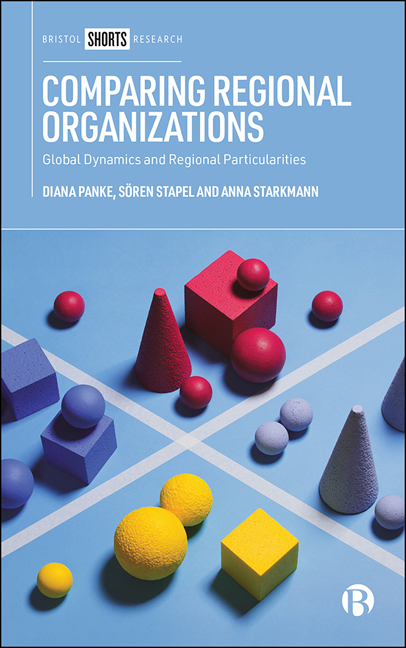Book contents
- Frontmatter
- Contents
- List of Figures and Tables
- Abbreviations
- Preface
- One Introduction
- Two Conceptual Framework and Measurement
- Three The Global Perspective
- Four Regional Organizations in Africa
- Five Regional Organizations in the Americas
- Six Regional Organizations in Asia
- Seven Regional Organizations in Europe
- Eight Conclusion
- Notes
- Appendix
- References
- Index
Eight - Conclusion
Published online by Cambridge University Press: 12 March 2021
- Frontmatter
- Contents
- List of Figures and Tables
- Abbreviations
- Preface
- One Introduction
- Two Conceptual Framework and Measurement
- Three The Global Perspective
- Four Regional Organizations in Africa
- Five Regional Organizations in the Americas
- Six Regional Organizations in Asia
- Seven Regional Organizations in Europe
- Eight Conclusion
- Notes
- Appendix
- References
- Index
Summary
Although research on comparative regionalism has gained particular attention in the last decades, it is evident that the EU is often treated as the most prominent RO and the ‘gold standard’ of regionalism (Breslin and Higgott, 2000; Sbragia, 2008; Lombaerde et al, 2010; Jetschke and Lenz, 2013; Lorenz-Carl and Rempe, 2013). This is unfortunate since 75 other ROs exist around the globe and they come in different shapes and sizes. Yet, to date there is no comprehensive analysis that puts all ROs into a comparative perspective and does so over a long period of time. This is exactly what this book seeks to accomplish in studying global dynamics and regional particularities of RO development.
Capturing patterns and trajectories of such a high number ROs over a long period of time requires a tool for systematic comparison. Therefore, this book develops a typology combining two dimensions that are important for the functioning of ROs: membership size and policy scope. First, the number of member states affects an RO's ability to come to collective decisions. The smaller the RO, the fewer interests at stake, and the more likely it is that delayed decisions and gridlocks can be avoided. This increases the ability of ROs to engage in collective action. Second, policy competencies define the areas in which ROs can potentially become active on a day-to-day basis. When ROs are equipped with a broad set of competencies, their potential to leave an imprint through regional governance increases. Combining both dimensions results in a typology of ROs that captures opportunities and challenges faced by ROs in their day-today operation.
The remainder of this chapter first provides an overview of the major findings when making use of this typology to map patterns and trajectories of ROs around the globe. It then discusses potential reasons behind the observed patterns as well as rationales of shifts between different types of RO and implications arising from the observed increase in regional cooperation around the globe.
Summary of findings
Regional cooperation in ROs is now prevalent in all regions of the world and has led to a diversification of RO types over time.
- Type
- Chapter
- Information
- Comparing Regional OrganizationsGlobal Dynamics and Regional Particularities, pp. 119 - 132Publisher: Bristol University PressPrint publication year: 2020



